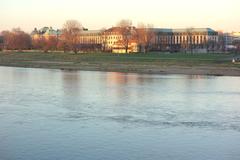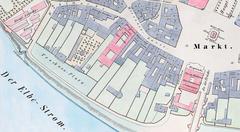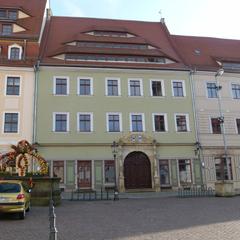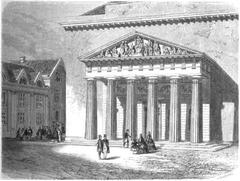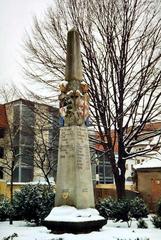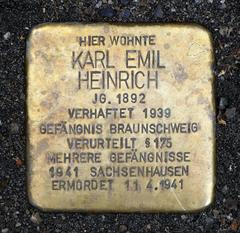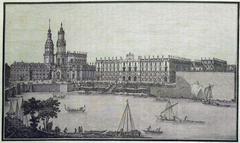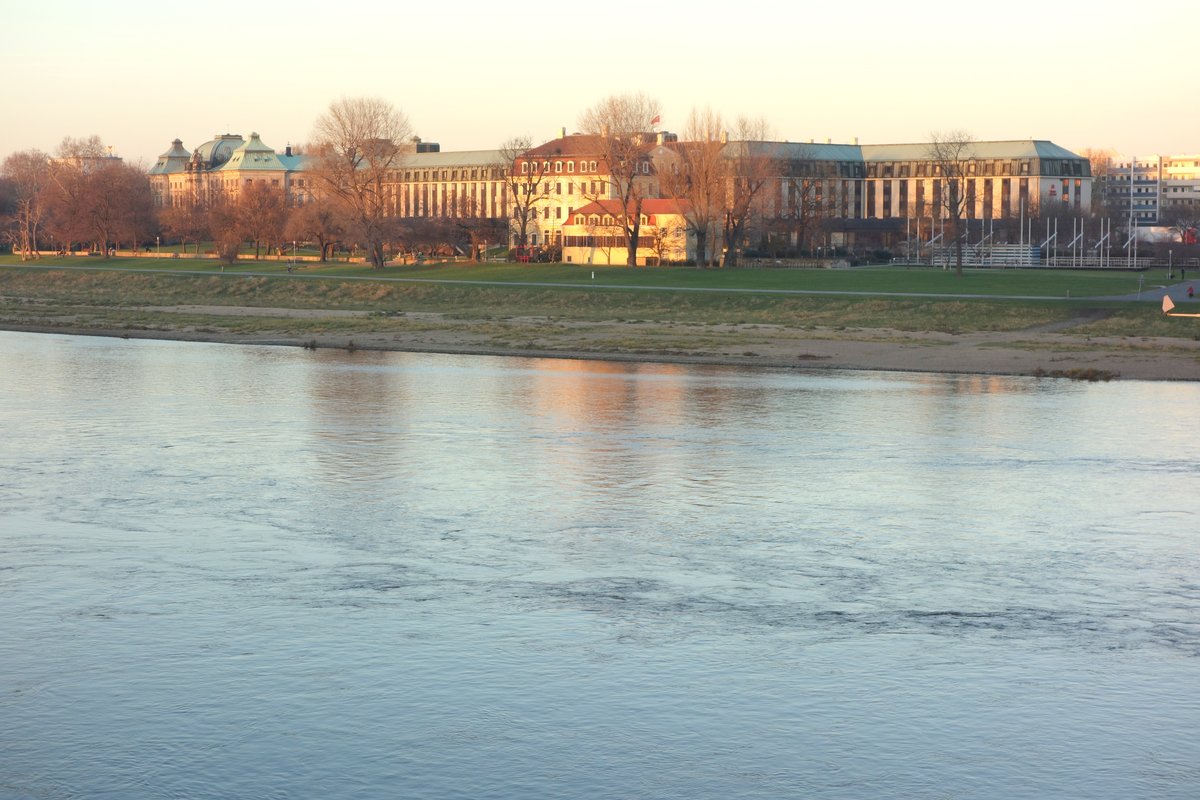
Visiting Canaletto-Blick: History, Tips, and Visitor Information
Date: 24/07/2024
Introduction
Visiting Canaletto-Blick in Pirna, Germany, offers a unique blend of art, history, and natural beauty. This renowned viewpoint is named after the famous Venetian landscape painter Bernardo Bellotto, known as Canaletto, who captured the essence of Pirna and Dresden through his meticulous and picturesque paintings during the mid-18th century. His works have not only immortalized the architectural charm of these cities but have also served as historical documents that continue to influence urban planning and preservation efforts (Dresden State Art Collections).
Bernardo Bellotto’s arrival in Dresden in 1747 marked a significant period in his career. Appointed as the court painter by Prince-Elector of Saxony Friedrich August II, Canaletto gained fame for his exceptional paintings of both Italian and German cities. Between 1753 and 1755, he painted eleven large vedutes of Pirna, a small city that became famously associated with his name. These works are now preserved in the Dresden State Art Collections and have brought Pirna’s picturesque market square and historic town center into the public eye (Pirna History).
For visitors, Canaletto-Blick provides not just a scenic viewpoint but a gateway into the rich history and cultural heritage of Pirna. This comprehensive guide will delve into the historical significance of Canaletto’s works, offer practical visitor tips, and highlight nearby attractions, ensuring an enriching experience for all who explore this historic site.
Table of Contents
- Introduction
- Historical Background
- Visitor Information and Tips
- Preservation and Influence
- FAQ
- Conclusion
- References
Historical Background
Canaletto’s Arrival in Dresden and Pirna
Bernardo Bellotto, known as Canaletto, was a renowned Venetian landscape painter who moved to Dresden in 1747. He was appointed as the court painter by Prince-Elector of Saxony Friedrich August II a year later. Canaletto had already gained fame for his exceptional paintings of Italian cities. His move to Dresden marked a significant period in his career, where he created some of his most famous works, including the “Canaletto View” of Dresden (Dresden State Art Collections).
Between 1753 and 1755, Canaletto painted eleven large vedutes of Pirna, making it the only small city he ever painted. These paintings have been preserved and are now part of the Dresden State Art Collections (Pirna History). His works brought Pirna into the public eye, capturing its picturesque market square and historic town center.
The Seven Years’ War and Canaletto’s Later Years
During the Seven Years’ War (1756-1763), Prince-Elector Friedrich August II lived in Warsaw, leaving Canaletto without clients in Dresden. Consequently, Canaletto moved to Vienna and Munich to continue his landscape painting. After the war and the death of Friedrich August II, Canaletto’s fame in Dresden had waned. He planned to find new work in Saint Petersburg but was instead commissioned by the Polish king in Warsaw, where he eventually died. Canaletto left behind 24 vedutes of Warsaw (Pirna History).
The Significance of Canaletto’s Paintings
Canaletto’s paintings are not just artistic masterpieces; they also serve as historical documents that provide a glimpse into the urban landscapes of the 18th century. His painting “Dresden seen from the right banks of the river Elbe below the bridge Augustus” is particularly influential, shaping our understanding of Baroque Dresden. This painting, created in 1748, is often referred to as the “Canaletto View” and remains a significant cultural and historical reference (Dresden State Art Collections).
Visitor Information and Tips
Dresden State Art Collections
- Visiting Hours: Daily from 10:00 AM to 6:00 PM
- Ticket Prices: Adults €12, Reduced €9, Free admission for children under 17
- Guided Tours: Available on request, check the official website for scheduling
- Accessibility: Wheelchair accessible, assistance available upon request
- Nearby Attractions: Zwinger Palace, Semperoper, Frauenkirche
- Best Photographic Spots: The Canaletto View, Brühl’s Terrace, River Elbe Banks
Pirna Historical Sites
- Canaletto House: Open daily from 9:00 AM to 5:00 PM, free admission
- Market Square: The site of Canaletto’s famous painting, often hosts events
- Herderhalle: Venue for cultural events and exhibitions
- Q24 and Zuschendorf Country Palace: Offer a range of leisure activities
- Special Events: Annual Canaletto celebration recreating his market square painting
Preservation and Influence
Canaletto’s Technique and Symbolism
Canaletto often used a camera obscura to create his paintings, a technique that added a sense of authenticity to his works. This method involved projecting an image onto paper, which was then transferred to a larger canvas. His paintings were not just accurate depictions of cityscapes but also carried political symbolism. For instance, his painting of Vienna included buildings associated with his patron, Maria Theresa, slightly enlarged or repositioned to please her (Wikipedia).
Impact on Urban Planning
Canaletto’s views have had a lasting impact on urban planning and preservation efforts. In Vienna, his painting “Canaletto Blick” has been a significant reference point in discussions about the city’s development. Plans to construct high-rises near Vienna’s historical center have been debated, with the protection of the Canaletto view being a crucial consideration. In 2017, UNESCO added Vienna to the watchlist after plans for a high-rise development threatened the characteristics that led to the city’s inclusion on the World Heritage List (Wikipedia).
Annual Celebrations and Modern Interpretations
The citizens of Pirna celebrate Canaletto’s legacy by recreating his famous painting of the market square once a year. This event highlights the town’s appreciation for its historical and cultural heritage. Additionally, modern technology has brought Canaletto’s works to life through digital multimedia city tours. The “Canaletto’s Vision” tour uses augmented reality to provide an interactive experience, allowing visitors to explore historical places and meet characters from Canaletto’s paintings (NMY).
Canaletto’s Legacy in Pirna
Canaletto’s influence on Pirna is evident in the town’s preservation of its historic architecture and the continued celebration of his works. The Canaletto House, located in the market square, serves as a testament to his impact on the town. Visitors can explore the house and learn more about Canaletto’s life and works. The town also offers a range of cultural and leisure activities, including events at the Herderhalle, the Q24, and the Zuschendorf country palace (Saxony Tourism).
FAQ
- Q: What are the visiting hours for Canaletto’s paintings in Dresden?
- A: The Dresden State Art Collections are open daily from 10:00 AM to 6:00 PM.
- Q: How much are tickets for the Dresden State Art Collections?
- A: Tickets are €12 for adults and €9 for reduced admission. Children under 17 can enter for free.
- Q: Are there guided tours available for exploring Canaletto’s works in Pirna?
- A: Yes, guided tours are available on request. Check the official websites for more details and scheduling.
Conclusion
Canaletto’s paintings have left an indelible mark on the towns of Dresden and Pirna. His works not only capture the beauty of these cities but also serve as historical documents that have influenced urban planning and preservation efforts. The annual celebrations and modern interpretations of his works ensure that Canaletto’s legacy continues to be appreciated by future generations. Visitors to Pirna can immerse themselves in the town’s rich history and enjoy the picturesque landscapes that Canaletto so masterfully captured on canvas.
